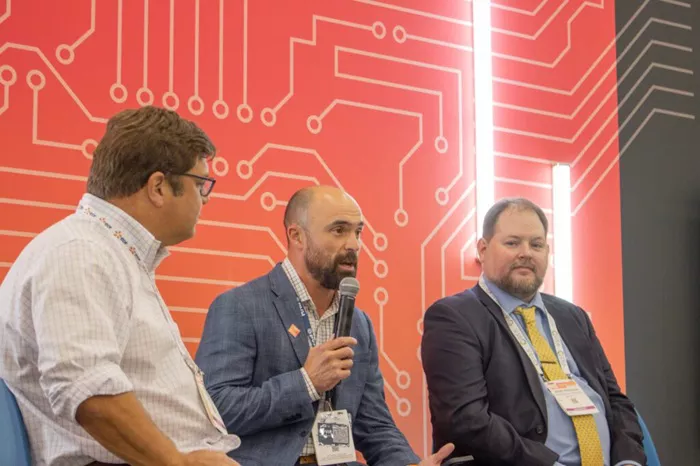At the recent RE+ event in Anaheim, California, industry leaders highlighted how U.S. solar manufacturing is not just advancing clean energy but also invigorating local economies and job markets. The conference, held from September 9-12, 2024, showcased how federal incentives and new manufacturing facilities are contributing to broader community development.
Panelists, including Will Cabana, Vice President of Sales at PV Hardware USA; Andy Meserve, Vice President of Business Development at Eos Energy Enterprises; and Mark Hagedorn, Vice President of Manufacturing Services at Clean Energy Associates, underscored the transformative impact of these investments. The session emphasized that U.S. economic and energy policies are inextricably linked to the expansion of domestic manufacturing capabilities.
Cabana praised the benefits of local manufacturing, citing PV Hardware’s recent launch of a 12-gigawatt factory in Houston. “The local impact is substantial. Our commitment to Houston extends beyond just setting up a facility; it’s about supporting and growing the community,” Cabana noted.
Community Impact
The panelists agreed that new manufacturing projects significantly benefit local communities. Eos Energy Enterprises, which began commercial production of its Eos Z3 batteries in Turtle Creek, Pennsylvania, reported positive changes in the local area. “Our employees are not just workers; they’re stakeholders. Many have achieved milestones like buying homes for the first time,” Meserve said. The influx of new jobs has spurred local economic growth, with increased business activity and new opportunities emerging in the region.
Job Creation
Job creation remains a central theme in the discourse on renewable energy. Cabana highlighted the shift from traditional oil and gas industries in Houston to renewables, noting that the new manufacturing facility has created a supportive work environment and close-knit community. Hagedorn emphasized that manufacturing facilities significantly amplify local economic activity, with new jobs generating multiplier effects throughout the community.
Economic Incentives
Government incentives, particularly through the Inflation Reduction Act (IRA), are pivotal in driving new interest in U.S. manufacturing. These incentives, coupled with local government support, have facilitated community engagement and project success. “The IRA has been instrumental in securing funding for growth,” Meserve explained. Local incentives are also crucial in addressing community-specific needs and fostering industrial development.
Supply Chain and Future Challenges
The expansion of U.S. manufacturing highlights the need to strengthen supply chains, a lesson underscored by the COVID-19 pandemic. Hagedorn noted that building a factory often involves creating a local ecosystem of suppliers. “Addressing supply chain risks is essential for long-term success. We are making progress, but there’s still work to be done,” he said.
Meserve concurred, stressing the importance of improved logistics and local component sourcing to fully capitalize on manufacturing investments.
As the solar manufacturing sector continues to grow, its impacts are increasingly evident, driving not only clean energy advancements but also significant economic and community benefits.
Related topics:
- Hyting Secures First Customer for Innovative Hydrogen Heating System
- bp and Iberdrola Greenlight 25MW Green Hydrogen Project at Castellón Refinery
- EU Approves €19.6 Million Wave Energy Project for Testing

